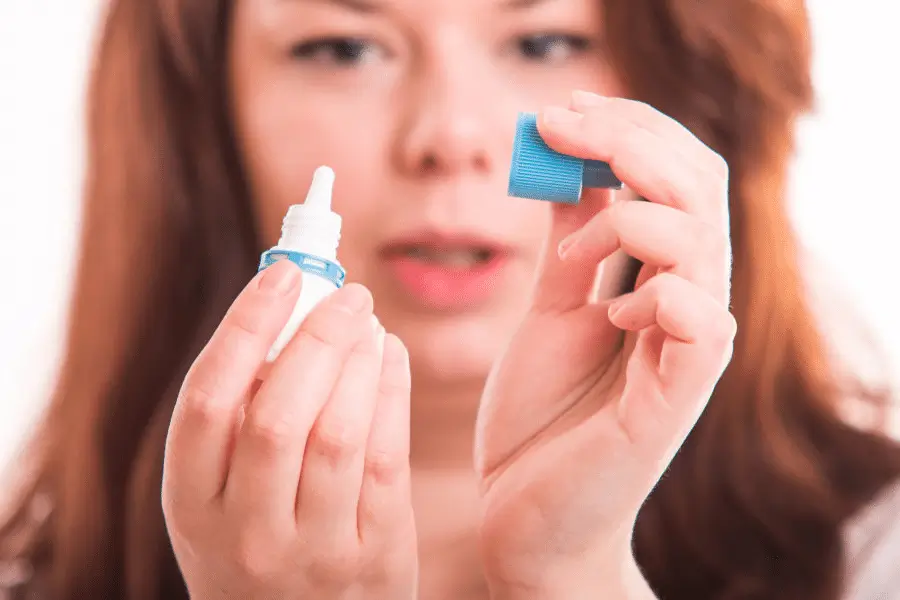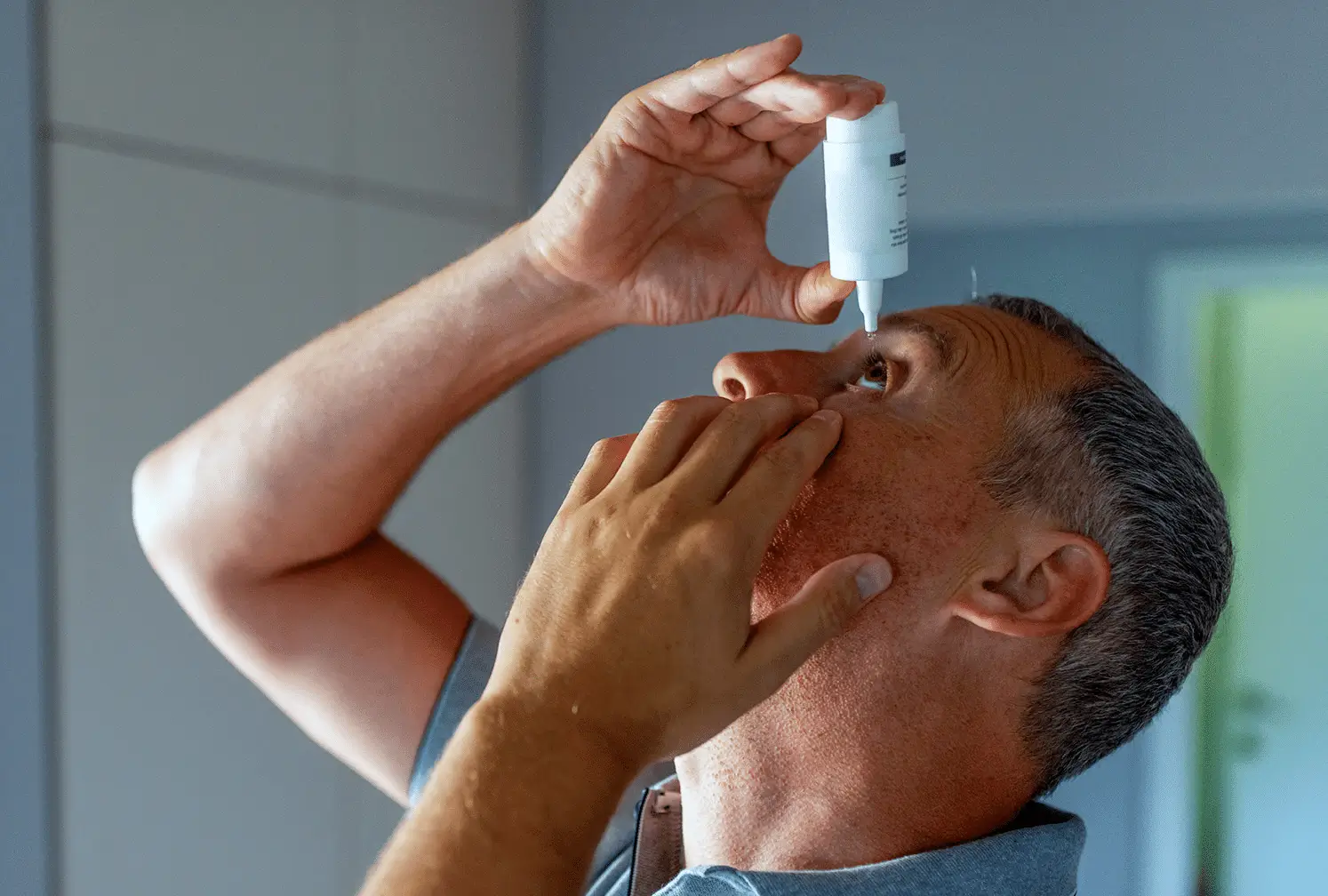Only for Licensed Professionals
Only for Licensed Professionals
.webp)
Tobradex Eye Drops – How Many Times a Day?
Nina Petrovic
Last Updated On: September 9, 2025
Eye drops are among the most common treatments for eye problems, with prescription solutions generating billions in global sales each year. They are trusted for managing infections, allergies, and inflammation, offering a simple way to deliver medication directly to the eye. Their effectiveness, however, depends not only on the medicine itself but also on using the correct dosage and frequency. Incorrect use can reduce effectiveness or even increase the risk of side effects.
One widely prescribed option is Tobradex, a combination of tobramycin (an antibiotic) and dexamethasone (a corticosteroid). Together, they work to fight bacterial infections while easing inflammation, making Tobradex a go-to treatment in certain eye conditions. Knowing how many times a day it should be applied is key to getting the most benefit while staying safe.
In this article, we’ll take a closer look at Tobradex eye drops, covering the recommended dosage, proper application frequency, and best practices for safe use.
Key Takeaways
- Tobradex eye drops combine tobramycin (antibiotic) and dexamethasone (corticosteroid) to treat bacterial infections with inflammation.
- Standard dosing is 1–2 drops every 4–6 hours for mild to moderate cases. Severe infections may begin with dosing every 2 hours, later reduced as symptoms improve.
- After eye surgeries, dosing schedules are personalized and always directed by the operating surgeon, based on the patient’s healing progress and individual risk factors.
- Tapering is required to prevent rebound inflammation; sudden discontinuation can worsen redness or swelling.
- Incorrect use can lead to side effects such as elevated eye pressure, cataracts, or delayed healing, as well as antibiotic resistance.
- Patient adherence to application instructions (handwashing, avoiding contact lenses, and not touching the dropper) improves safety and treatment outcomes.
- Tobradex should not be used longer than 10 days without medical review, as prolonged use increases the risk of complications.
About: Operating since 2016, Med Supply Solutions is known for being one of the industry’s top and trusted suppliers of cosmetic and viscosupplementation products. If you’re looking to buy Tobradex online, contact our sales department for more information.

Standard Recommended Dosing for Tobradex Eye Drops

When prescribing Tobradex eye drops, ophthalmologists follow structured dosing regimens to control both infection and inflammation efficiently. The exact dosage depends on the severity of the condition, but general guidelines often look like this:
- Mild to Moderate Infections: One to two drops every 4–6 hours. This provides steady levels of medication in the eye, controlling bacterial growth while easing redness, irritation, and discomfort.
- Severe Infections or Inflammation: Dosing may begin as often as every 2 hours. Once the infection and swelling improve, the frequency is reduced to limit corticosteroid exposure and reduce the risk of side effects.
While patients often ask, “Is Tobradex an antibiotic?”, it is actually a combination medicine. It contains tobramycin (antibiotic) and dexamethasone (corticosteroid) and is prescribed for steroid-responsive inflammatory eye conditions where bacterial infection or risk of infection is present. The antibiotic kills bacteria, while the corticosteroid minimizes swelling, redness, and discomfort. Correct dosing, under medical guidance, ensures both actions work safely together.
Adjusting Tobradex Frequency Based on Infection Severity

Not every eye condition requires the same intensity of treatment. Physicians adjust dosing schedules based on the severity of the infection, the extent of inflammation present, and the eye’s response to therapy. This individualized approach ensures effective treatment while lowering risks.
- Aggressive Infections: Frequent dosing at the start (every 2 hours) helps maintain the antibiotic’s activity in the eye, allowing it to control bacteria quickly. The steroid reduces swelling and irritation, helping patients feel more comfortable. Once symptoms improve, the frequency is gradually reduced.
- Milder Infections: For less severe cases, dosing every 4–6 hours is often enough to control bacteria without overexposing the eye to corticosteroids. This balance prevents worsening symptoms while keeping inflammation under control.
- Post-surgical Recovery: After procedures like cataract removal or corneal repair, dosing schedules are more personalized. Some patients may begin with frequent dosing in the first few days, before transitioning to less frequent application as healing progresses. The operating surgeon always directs these regimens and may differ from infection-only protocols, depending on the type of surgery, the stage of healing, and individual risk factors.
Because Tobradex combines an antibiotic and a steroid, adjustments are always carefully planned by an ophthalmologist. This prevents complications such as increased eye pressure, delayed wound healing, or antibiotic resistance.
Tapering Tobradex Dosing to Prevent Rebound Effects
Corticosteroid-containing medicines like Tobradex should never be stopped abruptly. If discontinued suddenly, rebound symptoms such as redness, swelling, or irritation may return, sometimes worse than before.
To avoid this, ophthalmologists create tapering schedules that gradually reduce both frequency and dosage:
- Transitioning from every 4 hours to every 6–8 hours as symptoms improve.
- Later reducing to once or twice daily before discontinuing completely.
This gradual taper allows the eye to adjust, keeping inflammation under control while minimizing stress on healing tissues. Healthcare practitioners tailor each tapering plan to the patient’s recovery progress, type of infection, and any underlying conditions. Controlled tapering protects the eye from flare-ups while ensuring both the antibiotic and corticosteroid components continue to work effectively.
Patient Instructions for Tobradex Application and Adherence
Correct application is just as crucial as dosing frequency. Patients should follow these steps:
- Wash hands thoroughly before applying drops.
- Tilt the head back and gently pull down the lower eyelid to create a pocket.
- Instill the prescribed number of drops without touching the dropper tip to the eye.
- Close the eye gently for 1–2 minutes to help absorption.
- Avoid wearing contact lenses during treatment, as they may worsen the infection or interfere with healing.
Following instructions and adhering to the prescribed schedule increases the chances of safe recovery while reducing the risk of prolonged infection or side effects.
Conclusion
The correct frequency of Tobradex eye drops depends on the severity of infection, clinical response, and the need for tapering. In many cases, patients use them every 4–6 hours, while severe infections may require more frequent dosing at the start. Tapering schedules prevent rebound inflammation, and proper application techniques further enhance safety and effectiveness.
With medical guidance, Tobradex can provide reliable relief from both infection and inflammation. Without supervision, however, the risks of side effects or misuse increase. Clear communication between doctor and patient is the best way to achieve safe, effective outcomes.
FAQs
1. How many times a day should I use Tobradex eye drops?
Most patients use them every 4 to 6 hours, unless otherwise directed by their ophthalmologist. Severe infections may require more frequent dosing initially, which your doctor may adjust. Do not use Tobradex for longer than 10 days without medical supervision.
2. Can I stop using Tobradex eye drops once symptoms improve?
No. Stopping suddenly can cause rebound inflammation. Always follow your doctor’s tapering plan to avoid flare-ups.
3. Are Tobradex eye drops safe for long-term use?
Do not use long-term without close medical supervision, as it can increase the risk of elevated eye pressure or cataracts.
4. Can I wear contact lenses while using Tobradex?
No. Avoid using contact lenses during treatment, as they can worsen infection or reduce the effectiveness of the medication.
References
Ophthalmic Eye Drop Market Insights & Analysis 2024-2034. Published March 15, 2024. https://www.futuremarketinsights.com/reports/ophthalmic-eye-drops-market
TobraDex Eye Drops dosage guide. Drugs.com. https://www.drugs.com/dosage/tobradex-eye-drops.html
Haymarket. TOBRADEX Prescription & Dosage Information. Medical Professionals Reference. Published February 26, 2025. https://www.empr.com/drug/tobradex/
Products
Cart
Log In
Newsletter
Subscribe for exclusive offers and updates on new arrivals
Share feedback at:
Working Hours
MON - SUN 9AM to 6PM EST
The Most Popular Brands
Med Supply Solutions
Support
Secure checkout is guaranteed with full adherence to PCI DSS payment standards.
Products listed here are guaranteed authentic and manufacturer-sourced.
Pay easily with trusted providers


*Google and Apple Pay are currently only available via a direct link provided by your account manager.
Copyright 2025. Med Supply Solutions